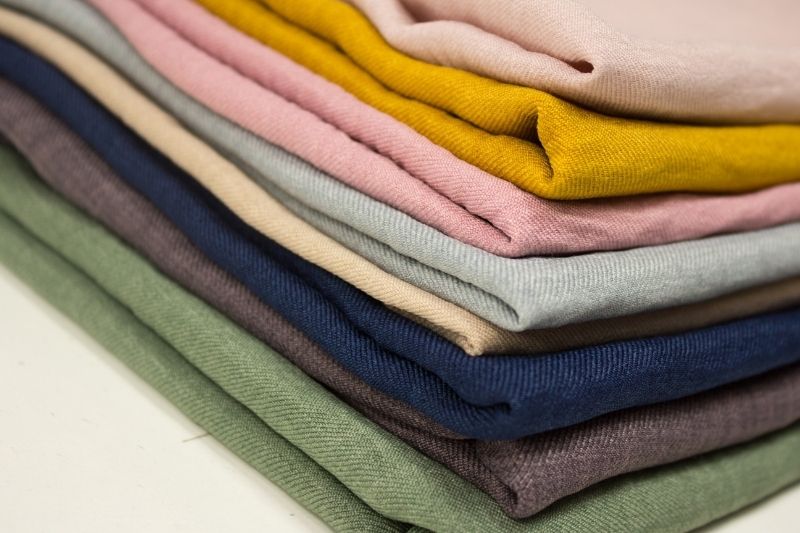No products in the cart.
5 Eco-friendly and Sustainable Fabrics

It’s either you protect the environment, or it destroys you! This phrase applies to everyone, regardless of their economic sector or profession. But in this post, the focus will be on the fabrics used in the textile sector. Yes! The clothing industry at large affects the environment. For example, did you know about 6.7% of human-caused carbon emission is from clothing? This is not only in fabric production but also includes after-purchasing care.
To reduce environmental degradation, you need to embrace clothing made from eco-friendly and sustainable fabrics. These fabrics are from natural sources or recycled materials. They also incur less production cost, have fewer fibre properties, and have a low environmental impact. In addition, the sustainable fabric aids in water conservation, soil regeneration, waste reduction, and low emissions.
Below, you will find a few sustainable fabrics that you should look for when shopping.
1. Recycled Cotton
Cotton fabric can make anything from vests to jeans and is the most commonly used fabric. But on the flip side, the growing process of this natural fibre affects the environment. The crop is water-intensive and requires pesticides since the plant is prone to pests.
However, you can use alternatives like organic or recycled cotton. Both are more sustainable than conventional cotton. For instance, organic cotton requires no pesticides or chemicals. They are more environmentally friendly but don’t solve the water issue. Its production levels are low and only account for 0.7% of cotton production. Besides that, it’s very pricey.
Recycled cotton is more sustainable among all. Its production is through an industrial process of breaking down post-consumer cotton waste. The process uses less energy and water compared to conventional or organic cotton.
2. Recycled Nylon
Nylon has comparable synthetic properties like those found in fishing nets or pantyhose. It doesn’t break, plus it is recyclable. As a tough, stretchy fabric, recycled nylon becomes a perfect fit for making form-fitting apparel and high-performance sportswear. It is also used to make tights, stockings, swim, activewear, among other clothing items.
Unfortunately, both new and recycled nylon are not biodegradable, meaning they can stay in landfills for many years (10 to 200 years). It’s derived from petroleum products and produces nitrous oxide during production. It also requires a large quantity of water and energy.
3. Recycled Polyester
Recycled Polyester makes a wide range of clothing, including swimwear, collared shirts, winter jackets, and sports jerseys. The fabric is sourced from recycled plastic bottles, containers, and used polyester garments. Furthermore, the recycling process aids in reducing plastic pollution and cuts down the need for virgin material for the polyester industry.
In addition, recycled Polyester is more sustainable since it requires no oil extraction process, which is energy-intensive, thus fewer emissions. It uses less water compared to other materials. Plus, you can wear clothing made from 100% polyester fabric for long before it becomes unusable.
4. Hemp
Hemp is an eco-friendly fabric that grows naturally. It’s among the most versatile plants under the sun. Plus, it’s a plant with the ability to absorb carbon dioxide, replenish the soil, generate high yield, and require no pesticides.
As a fabric, hemp possesses many properties similar to linen. For example, it’s naturally antibacterial, biodegradable, light, and strong. Hemp fabric is warm, moisture-wicking, breathable, and easy to blend. It’s also durable and becomes softer the more you wash and wear it.
Besides giving you sustainable clothing fabric, hemp can feed you, make a home for you, and give you natural beauty products. With all these attributes, it’s only fair to say hemp gives you more in terms of sustainability.
5. Linen
Linen is one favourite and popular eco-friendly fabrics in the textile sector, and it’s for a good reason. It’s produced from flax, which grows in areas where few crops can and needs no fertiliser. Also, you can use the plant in its entirety, meaning the plant has no waste.
Like hemp, it’s biodegradable and durable. Other qualities include breathable, absorbent, antimicrobial, lightweight, and moth-resistant. It also gives you a cooling effect in summer, where the fabric lowers your body temperature, unlike cotton.
From a sustainability perspective, linen requires little water than cotton. And as a bonus, it requires no pesticides or chemical fertiliser.
There you have it! Five most sustainable fabrics that are also friendly to your environment. So whether you are a seamstress, designer, or fashion lover, always go for sustainable fabrics. Doing so is essential to the environment and its sustainability at large.
















Leave a Reply